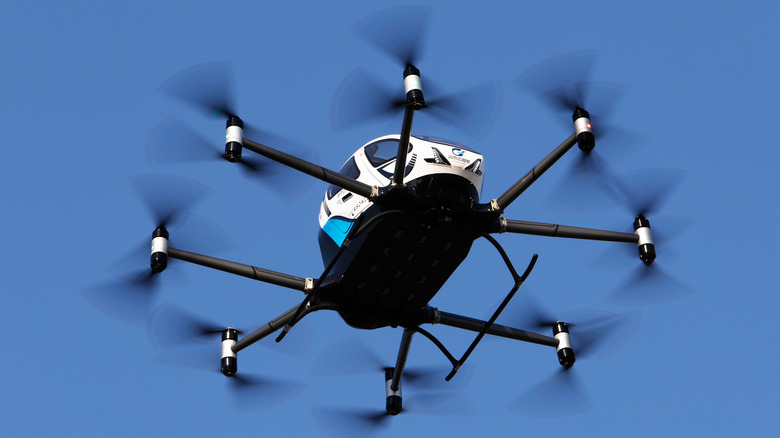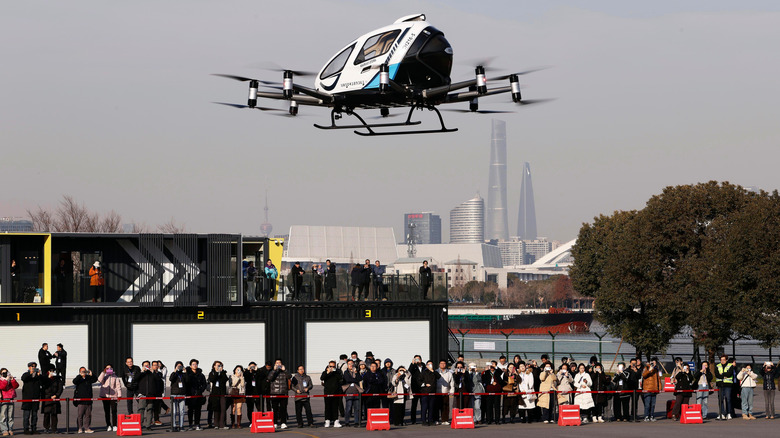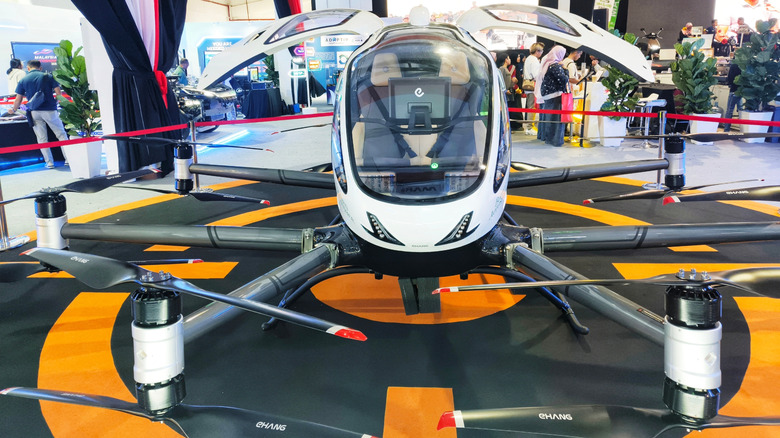Here's When China Could Actually Have Flying Cars
The exponential rate of technological progress means we constantly feel as though we're truly living in the future. For instance, less than a decade ago the prospect of self-aware artificial intelligence seemed like a distant concern, more applicable to sci-fi fantasies than the real-world. Yet today, the issues of whether AI will prove to be good or bad and how close we are to artificial super-intelligence taking over from humans are very real and relevant. Meanwhile, companies like Tesla and SpaceX are working on AI-powered personal assistant robots and making progress on establishing a colony on Mars, further, there are already multiple examples of robots replacing human workers.
As such, it can sometimes feel as though the future is here long before we expected it. Now, we can add the real prospect of flying cars to the equation. We're already seeing Tesla test unmanned taxis, with videos spreading across the internet of these fully automated cars driving around Austin, Texas in 2025. In June of that same year President Donald Trump signed executive orders allowing U.S. manufacturers to test flying car prototypes, though it seems China could be much closer to introducing such flying vehicles within just a few years. Well, sort of. The country is now operating flying taxis but calling them flying cars might be a bit of a stretch.
China's is already rolling out flying taxis
China has been working on flying taxis for some time, with the country's authorities encouraging firms to develop such vehicles in order to dominate what they call the low-altitude mobility economy. This refers to vehicles flown below 1,000 meters, or 3,280 feet. Back in 2021 the Chinese government implemented policies and regulations to encourage companies to invest in aerial transportation in cities, and since then there has been considerable progress. Companies such as AeroHT, an affiliate of Xpeng, have recently received a license to build their first flying car while numerous other firms are spending significant amounts on research and development in this sector.
Now, the first license for commercial use of these flying passenger vehicles has been granted, prompting some exciting predictions about the future of flying cars. As reported by CNBC, a senior executive at a Chinese company that produces autonomous aerial vehicles has predicted that flying taxis will become a reality in the country in the next three to five years. What's more, these airborne vehicles will be completely pilotless.
Ehang's vice president, He Tianxing, made the prediction after his company and joint venture partner Hefei Heyi Aviation were granted a certificate to operate "civil human-carrying pilotless aerial vehicles" by the Civil Aviation Administration of China. That essentially means the firm has been cleared to not only test but deploy unmanned flying vehicles, which are set to debut in Guangzhou and Hefei for the purpose of tourism and urban sightseeing.
Will we really see flying cars in the next few years?
It should be noted that the electric vertical takeoff and landing vehicles (eVTOL) being flown by Ehang aren't exactly the type of flying cars you might be envisioning. These fully electric unmanned aerial vehicles (UAVs) are built to carry passengers on short-to-medium distances at low altitudes using a series of propellers that essentially make the vehicle look like a large drone with a cockpit for passengers. So, if you were imagining Beijing looking like a scene from "Blade Runner" in the near future, that's not quite the image envisioned by Ehang's vice president.
Ehang isn't the only company developing these eVTOLs, either. State-owned Guangzhou Automobile Group (GAC) debuted their own version at the Hong Kong International Auto and Supply Chain Expo in June 2025. The firm's Govy AirCab looks very similar to its Ehang counterpart, but with the propellers on top, making it look like some sort of mini helicopter more than a flying car. What really makes these vehicles unique is not only their intended purpose of carrying passengers around cities à la traditional taxis, but the fact they're fully electric and pilotless. Ehang's UAV can be fully charged in just two hours while GAC claims its AirCab only needs 25 minutes to do the same. The latter also comes with 5G, a voice assistant, and controls to set the temperature, music, and even the scent.
These might not be the flying cars of sci-fi just yet, but the vehicles being tested and now deployed in China are definitely futuristic and surely hint at major changes to transportation in the near future. For now, these drone-like UAV taxis look set to take over China's low-altitude airspace in the next decade, though it will likely be some time before the rest of the world truly enters the age of the flying car.


